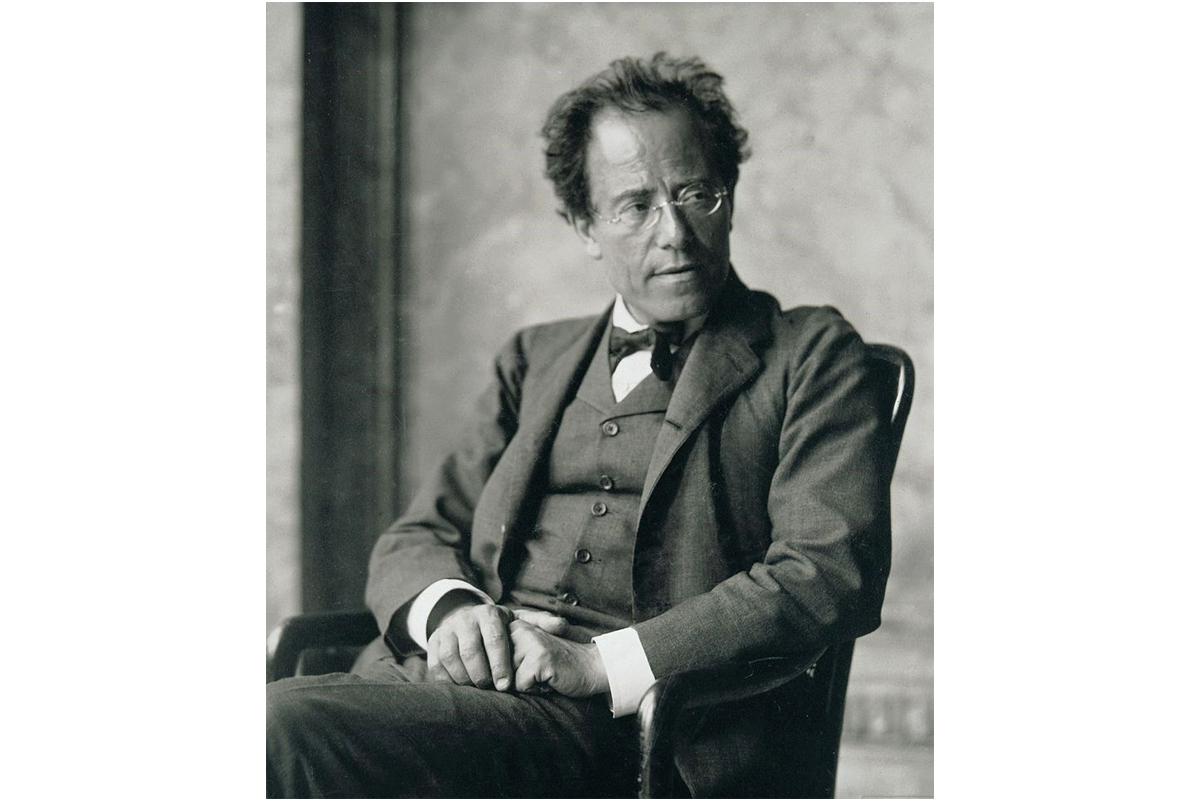S.B. Symphony Takes On Mahler’s 6th
Weekend Program Highlights Composer’s Epic Vision

It’s not something that happens often when it comes to the orchestral repertoire, but this weekend, the Santa Barbara Symphony will play a well-known, major piece that it has never played before. After 64 years of programming, the group will finally get around to performing the Symphony No. 6 in A Minor of Gustav Mahler this Saturday-Sunday, and it is no small undertaking — obviously part of the reason we haven’t heard it live here before. With a full roster of 102 musicians onstage and a length of approximately 80 minutes, the so-called tragic symphony will be presented alone and without intermission.
When I spoke with the symphony’s principal bassoonist, Andy Radford, about the novelty of this ambitious project, he said that a lot of the musicians will be playing it for the first time as well. “What’s interesting to me,” said Radford, noting another aspect of Mahler’s extravagant design, “is how there are 12 or 14 musicians who don’t play a note until the fourth movement.” Radford positively bubbled over with music-geek enthusiasm for the work’s depth and complexity. Written in the period immediately before Mahler’s life was shadowed by mortal illness, the work is famous for its nerve-wracking intensity and the “blows of fate” hammer strokes that emerge from the elaborately augmented percussion section. For Radford, the work emanates a sense that Mahler knew hard times were on their way, not only in his own life but for all of Europe, as his beloved Vienna would soon be plunged into two devastating world wars. “He was clearly aware that things were changing,” said Radford, “and you can hear it in the music, which seems to be saying, ‘Hold on, it’s getting dark.’”
Maestro Nir Kabaretti, never one to elide an interesting point of musicological interest, will present the work in two distinct sequences. On Saturday night, listeners will hear it played in the order allegro-andante-scherzo-finale. On Sunday afternoon, the center movements will be in the opposite order, scherzo-andante, rather than andante-scherzo. As even a casual listen to the recorded work will quickly establish, there’s a substantial difference. The satirical vein in which the scherzo revisits some themes from the opening allegro means something different when it comes right away, rather than after the more somber andante.
Summarizing the ambitious nature of this piece, with its extraordinary demands on musical resources (e.g., the scherzo requires four harps), Radford quoted a famous dictum of Mahler’s, who said that “a symphony must be like the world. It must contain everything.”
But don’t let the hype, or the sobriquet “Tragic,” which the composer disavowed, scare you away from what is certain to be an electrifying musical experience. Mahler’s command of compositional technique was at its zenith in this phase of his career, and the piece is full of the most exquisite textures and effects imaginable. Radford points to the composer’s extensive experience as a working conductor, plus his genius, as sources for the intuition with which he understands what each individual musician is up against with his or her instrument. “He knows the instruments so well that no one has to do too much,” he said. Some longer works require so much effort from horn players, for example, that their faces become overly fatigued. That consideration also applies to the listener; there’s so much variety, and such beautiful alternations between massed sound and intimate ensembles, that the work’s hour and 20 minutes fly by. If this sounds interesting to you, don’t miss it. They might not play it again for a while.
The Santa Barbara Symphony performs Gustav Mahler’s Symphony No. 6 in A Minor Saturday, April 21, at 8 p.m. and Sunday, April 22, at 3 p.m., at The Granada Theatre (1214 State St.). See granadasb.org or call (805) 899-2222.



